Fujifilm XF 55-200mm f3.5-4.8 R LM OIS Lens Review:
There are tons of Fujifilm X Series lenses to choose from nowadays with a lot of new tech and designs but with that said, the earlier generation lenses are still really awesome. As some of you know, I went on vacation last month, and I brought with me two lenses to review: one was the XF 8-16mm, which you can find the review here. The other was an older lens that for some reason, I never reviewed before but decided to do so finally, the XF 55-200mm f3.5-4.8 R LM OIS lens. Given that I do love ultra wides, I honestly thought I was going to use the XF 8-16mm most of the time but surprisingly, I used the XF 55-200mm more. I also enjoyed it more. Here’s why.
Fujifilm XF 55-200mm f3.5-4.8 R LM OIS Lens Build Quality:
First, let’s talk about build quality. In terms of that, we’re talking about a lens that’s better built than the first generation lenses like the XF 35mm f1.4 (although it’s still one of my favorite lenses by Fuji), but maybe not quite up to the same level as the most recent cater to pro type/fixed aperture lenses. Still, the build is still very decent. The lens feels very solid, and well-made. The barrel is metal. The aperture ring clicks nicely in third stops, and the zoom is very smooth although there is a little zoom creep with my copy but not out of the ordinary considering the focal length range/weight. The important thing is it’s not loose.
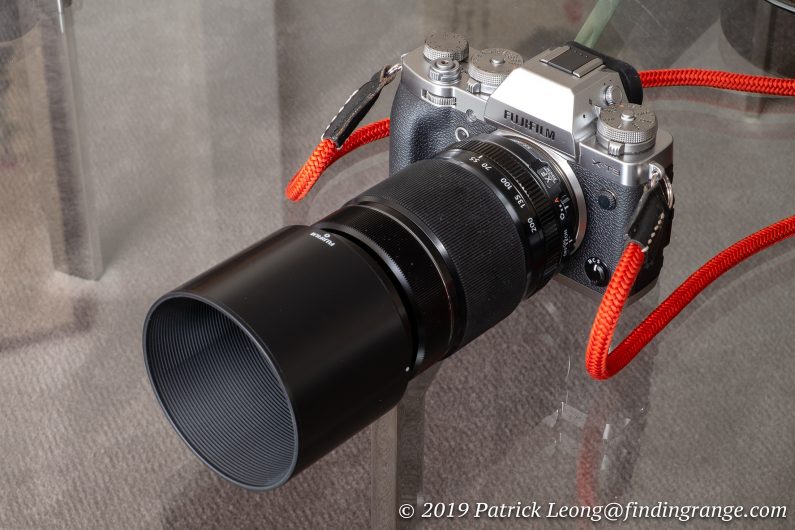
↑ Fuji X-T3 with the XF 55-200mm f3.5-4.8 R LM OIS lens attached.
As for other features, the XF 55-200mm f3.5-4.8 R LM OIS lens does have image stabilization, which is extremely handy when you consider its telephoto capabilities. According to Fujifilm, the image stabilization allows the use of shutter speeds that are 4.5 stops slower. I do not doubt this; I went on a cruise for my vacation, and in addition to helping me use slower shutter speeds when I needed to, the image stabilization was great even while I was on the ship. Whenever we left a port, I went to the back of the ship to watch us sail away from whatever island we had just visited. I would use the XF 55-200mm throughout its zoom range, and the image stabilization was very effective in preventing camera shake/movement as the ship was moving.
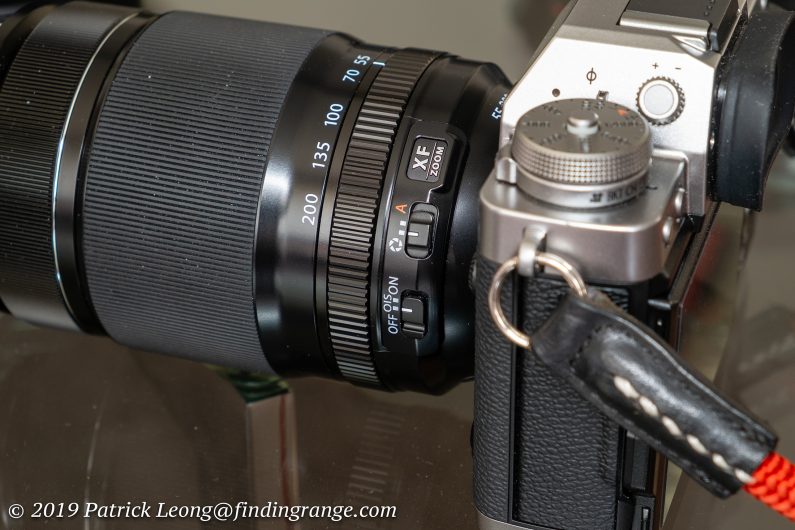
↑ The XF 55-200mm has image stabilization, which is very useful for a lens of this focal length range.
While the XF 55-200mm does come with image stabilization, it does not come with weather sealing. While I’m mentioning this because it’s a review, I don’t necessarily see this as a bad thing or as some would say, a deal breaker. I know we all want weather sealing everything these days but to me, the lack of weather sealing has never been the end of the world or a reason not to purchase something. Yes, it’s definitely a bonus if the manufacturer designed it into the camera or lens but for me, the important thing is if the lens is good and fits my needs. That’s all I care about. In fact, come to think of it, every lens that I own for my Fuji cameras are not weather sealed.
In terms of size, this lens isn’t really that big in my opinion when you consider the focal length. It has a 62mm filter thread, which isn’t outrageously huge or anything like that to me. It’s definitely longer than the more standard focal lengths, and at 580 g, it weighs a bit more but keep in mind we’re talking about a 55-200mm zoom. The equivalent focal length on the Fuji’s APS-C sensor is 84-305mm. Nothing here is unreasonable to me for this type of lens. The XF 55-200mm also come with a lens hood, which does make the XF 55-200mm f3.5-4.8 R LM OIS lens feel a lot longer. The hood is reversible for storage though, which is very helpful. I did use the hood for the first half of my testing but started to leave it at home for the rest of the days that I had it. I feel like a lot of lenses these days are so good that I don’t always use the hoods anymore.
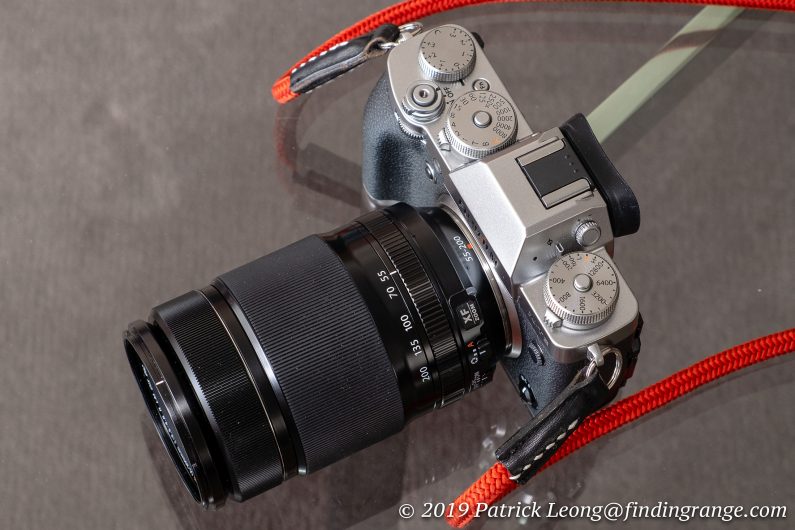
↑ I don’t particularly feel this lens is that massive when you consider it’s focal length range.
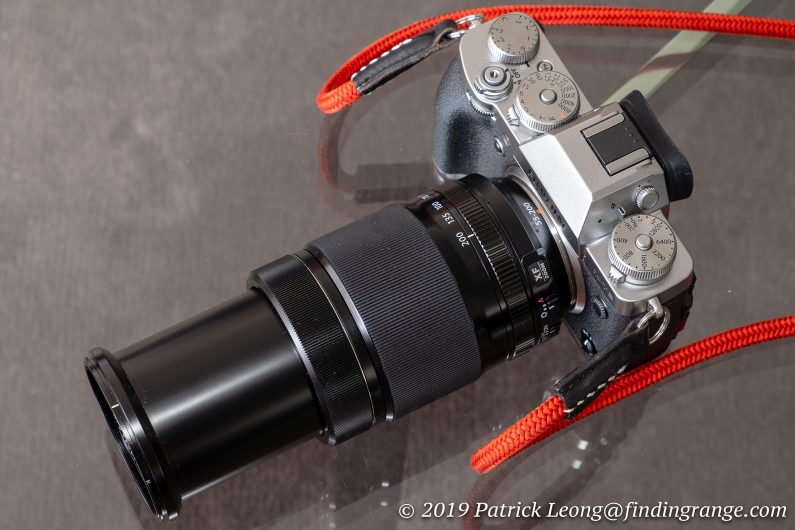
↑ Here’s the lens when it’s zoomed out.
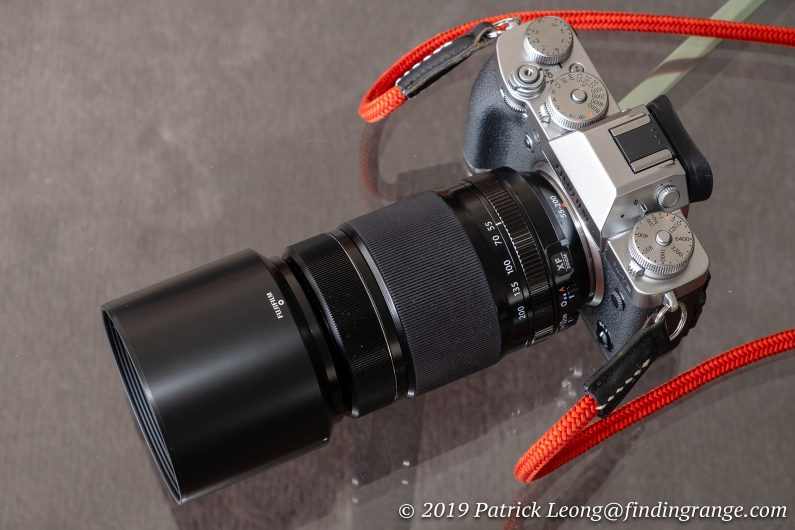
↑ This is the XF 55-200mm with the lens hood attached.
Fujifilm XF 55-200mm f3.5-4.8 R LM OIS Lens Autofocus:
The good thing about reviewing an older lens like the XF 55-200mm f3.5-4.8 is that I got to test it with one of Fujifilm’s latest cameras, the X-T3. I got to test not only it’s image quality on Fujifilm’s latest sensor, which I will talk about soon but also the autofocus system.
With its linear motor, I found the lens’ autofocus to be decently fast. It’s not as fast as some of Fuji’s latest releases but it’s definitely not slow either. The XF 55-200mm f3.5-4.8 R LM OIS lens locked on very quickly, precisely, and silently onto my subjects with no issues at all. At its longest focal range, it is a bit slower in focusing but overall, I have no complaints.
Fujifilm XF 55-200mm f3.5-4.8 R LM OIS Lens Image Quality:
Let’s now talk about the image quality. I’ve reviewed almost the entire Fujifilm X Series lens collection, and overall, there really isn’t a bad one out of the bunch. I’m glad to say that you can definitely add the XF 55-200mm f3.5-4.8 R LM OIS lens to the bunch of great lenses as well. I’m not normally a huge fan of zooms, especially slower ones, so I wasn’t expecting to like this lens as much, especially since there is the higher end XF 90-140mm f2.8 but I have to say, I was impressed by the image quality of the XF 55-200mm. I heard good things about it still surprised me at how much I liked this lens.
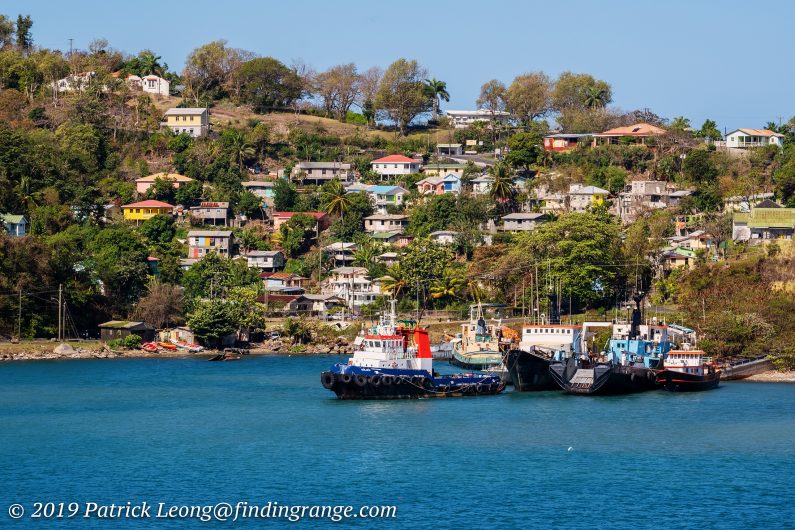
↑ This was taken in St. Lucia. The settings were f11, 250 ISO using the 90mm focal length. Shutter speed was 1./250s.

↑ This was taken as while I was on the cruise ship leaving NYC. The settings were f11, 160 ISO using the 149mm focal length. Shutter speed was 1/105s, and as you can see, I was still able to get sharp results thanks to the image stabilization. Black and white conversion was done in Camera Raw.
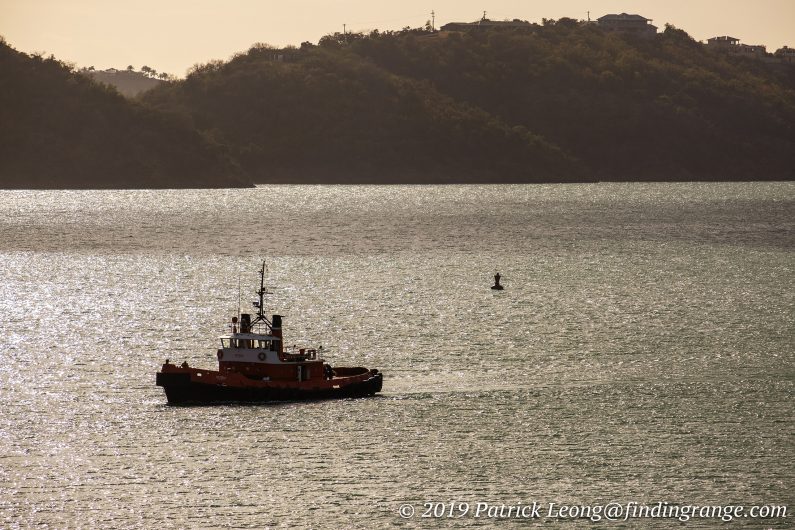
↑ Here’s one taken at f8, 160 ISO using the 200mm focal length. The shutter speed was 1/950s. I was actually on the cruise moving to the next destination.
Let’s talk about sharpness first. At 55mm, center sharpness is excellent even wide open. In fact, it was difficult for me to even see much of a difference between say f3.5 and f5.6. Even the corners did very well at f3.5. There was minimal softness in the corners, and of course, as you stop down, it does get even better. As the focal length range increased, I found the results with my copy to be even better. Center sharpness is excellent like at 55mm but the the lens performed better in the corners. At 200mm, sharpness does diminish ever so slightly but it is very hard to tell even with pixel peeping. As far as I’m concerned, this is a lens you should feel completely free to use at whatever aperture or focal length that you like.
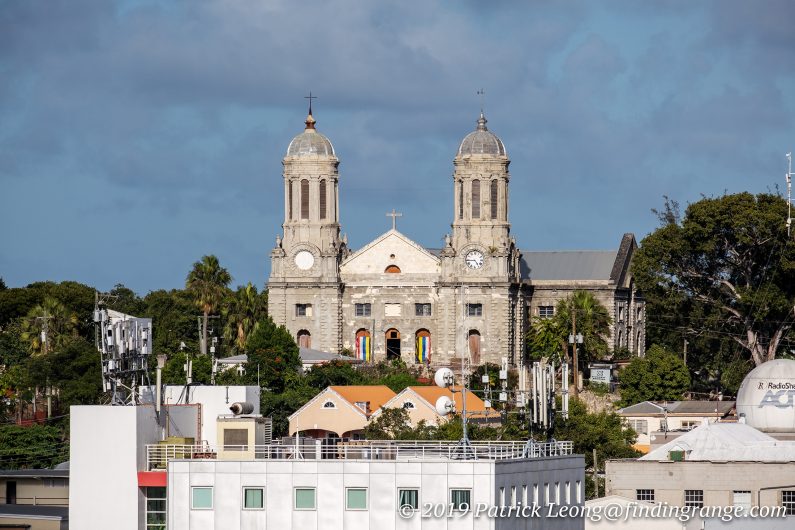
↑ Here’s another taken with the 200mm focal length. The settings were 160 ISO, f8, and 1/800s. This was taken in Antigua like the photo above.

↑ Here’s a 100% crop of the photo above.

↑ Here’s a shot taken at 149mm. The settings were f11, 800 ISO, and 1/250s.
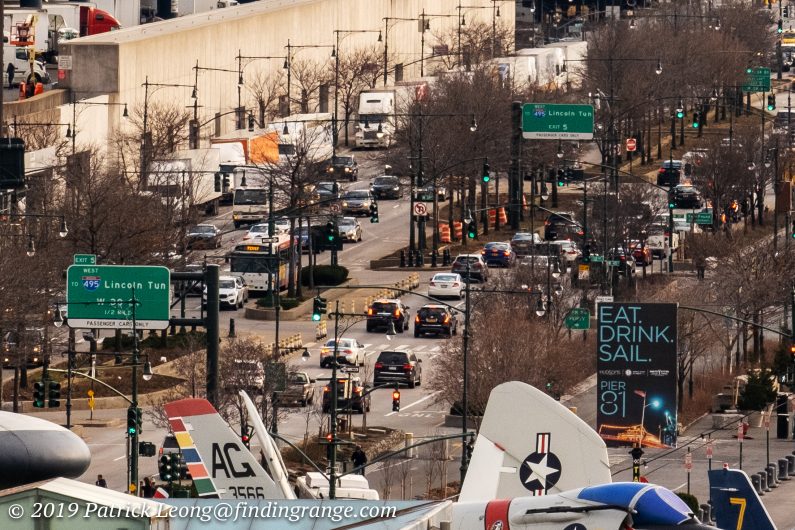
↑ Here’s a 100% crop of the photo above.
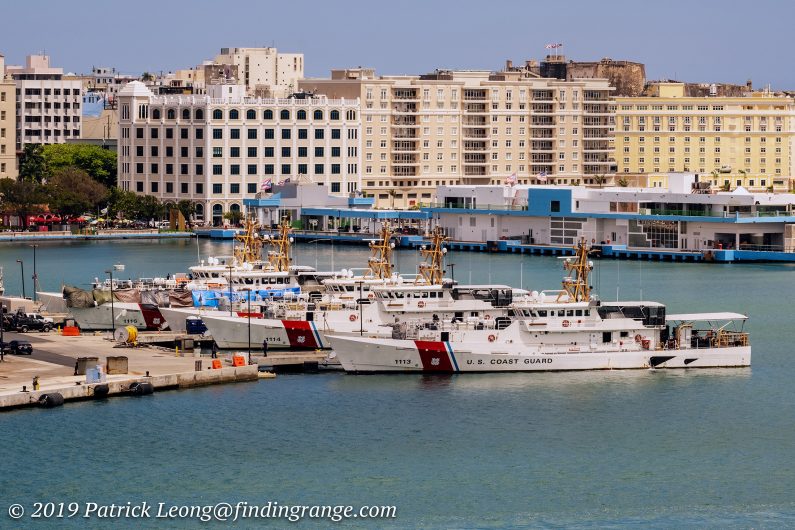
↑ This was taken while we were entering San Juan, Puerto Rico. The settings were f11, 1/640s, and 400 ISO. I used the 100mm focal length.

↑ Here’s a 100% crop of the photo above.
As for other traits, things like vignetting is very well-controlled along with distortion. In my opinion, they are non-issues. I also did not experience any flare with or without the hood attached. Color rendering is also excellent, and so is clarity. What’s not to love here? As you can see, there’s tons of pop in the photos as well. Image quality wise, this is just a plain out superb lens.
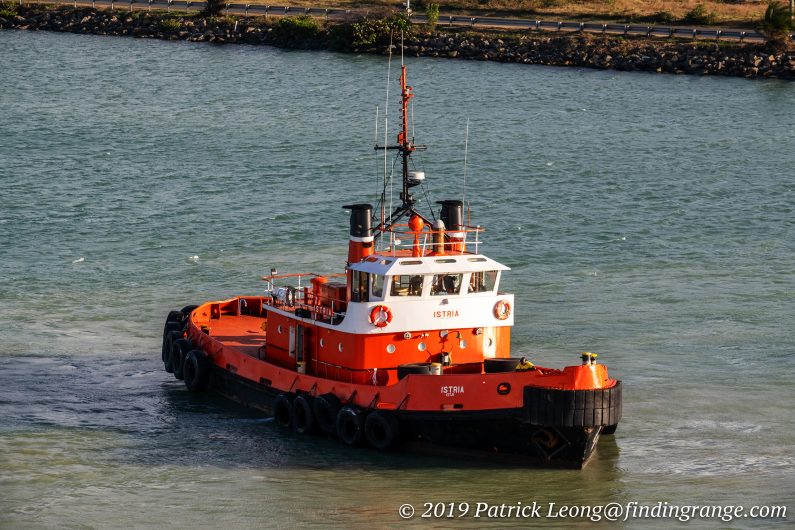
↑ This was taken while we were leaving Antigua. The settings were f8, 250 ISO, and 1/250s. I had the zoom set at 128mm.

↑ This was taken with the 55mm focal length. The settings were f10, 1/680s, and 1600 ISO. I needed the higher shutter speed because at this point, the cruise ship was moving pretty fast.

↑ Here’s one as we were entering San Juan, Puerto Rico. The settings were f11, 640 ISO, 1/1000s using the 82mm focal length.
The benefit of the relatively slower XF 55-200mm f3.5-4.8 R LM OIS lens is that it’s a more compact lens, which is greatly appreciated. It would be easy for me to leave a lens like this at home because I don’t often times, need an 84-305mm equivalent but I’m more willing to bring it with me because of its compact nature. However, because it’s a slower lens, don’t expect crazy bokelicious shots that you would get from say the XF 90mm or the XF 56mm. You can still produce a shallow depth of field though, and the bokeh isn’t bad at all. It’s decent, and if you wanted to take some portraits, for example, it still does a good job at isolating the subject.
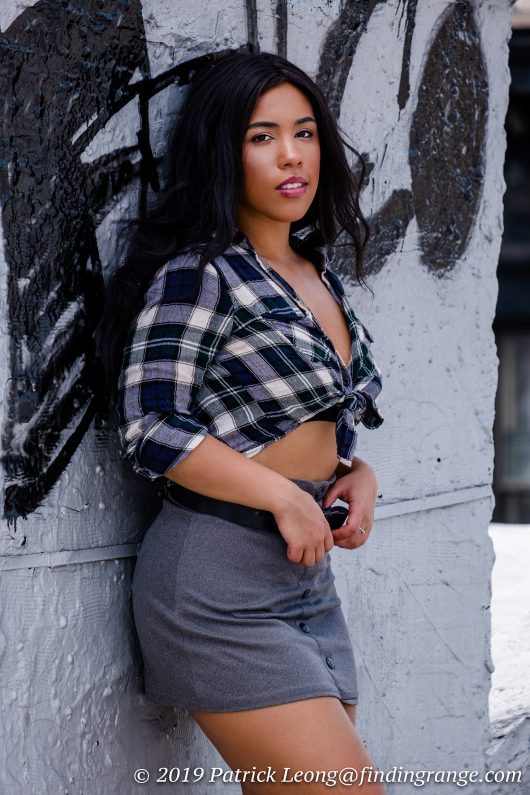
↑ This was shot wide open at f4.6. I used the 164mm focal length, and the rest of the settings were 1/500s, and 160 ISO.
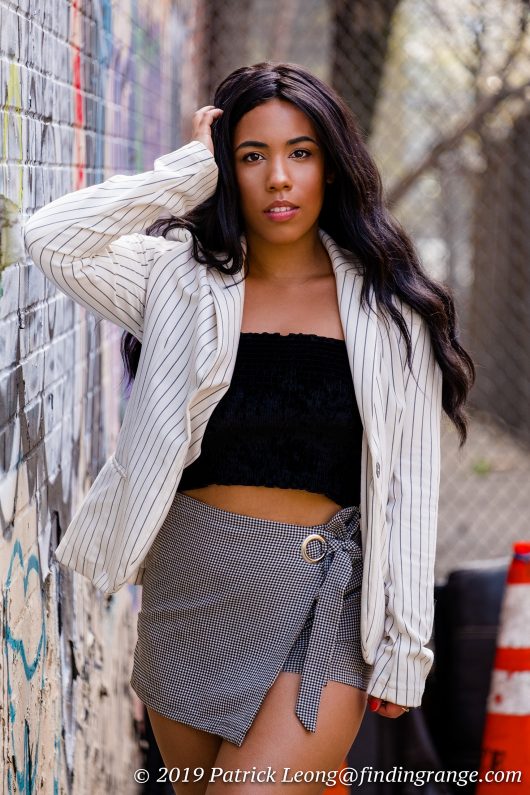
↑Here’s another shot wide open at f4.4 using the 135mm focal length. The settings were 1/250s, and 320 ISO.
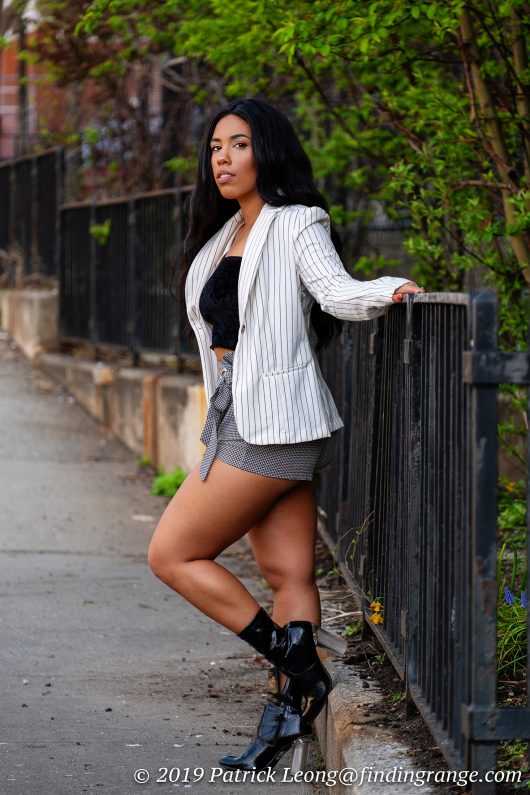
↑Here’s one last one shot wide open at f4.2. The focal length was 105mm, and the settings were 1/250s, and 160 ISO.
Fujifilm XF 55-200mm f3.5-4.8 R LM OIS Lens Image Pros And Cons:
Fujifilm XF 55-200mm f3.5-4.8 R LM OIS Lens Image Pros:
- Well-built.
- Compact for its focal length range.
- Image stabilization comes in handy for such a long focal length range.
- Autofocus is quick.
- Excellent Image Quality.
- Comes with reversible lens hood.
Fujifilm XF 55-200mm f3.5-4.8 R LM OIS Lens Image Cons:
- Modest maximum apertures might not fit everyone.
Fujifilm XF 55-200mm f3.5-4.8 R LM OIS Lens Image Verdict:
I seriously thought I wouldn’t be interested in the XF 55-200mm f3.5-4.8 R LM OIS lens, which is probably why it took me so long to review it but I have to say, this is now one of my favorites in the X Series collection. The build is decent, it has image stabilization, which is extremely helpful for a lens of this focal length range, and the image quality is superb. Best of all, it’s actually pretty compact when you consider its a telephoto zoom. Yes, it does feel larger on the Fuji bodies when compared to the more normal focal lengths. There’s no doubt about that; however, I found it to still be perfectly manageable. I never felt weighed down by it while I was trekking around even in the tropical heat. In fact, I found it a lot easier to carry around, and use than the XF 8-16mm, which I reviewed earlier. It was also less conspicuous than the XF 8-16mm.
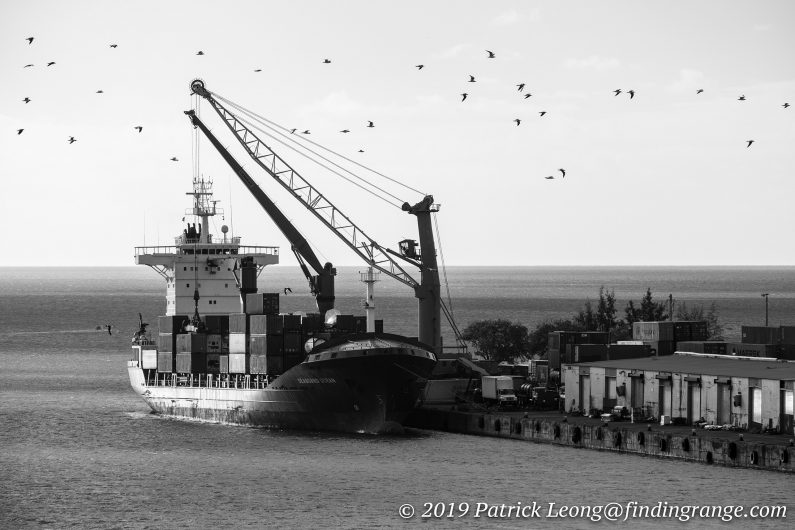
↑ Black and white conversion was done in Camera Raw, and the settings for this photo were f8, 1/800s, and 160 ISO. I used the 200mm focal length.
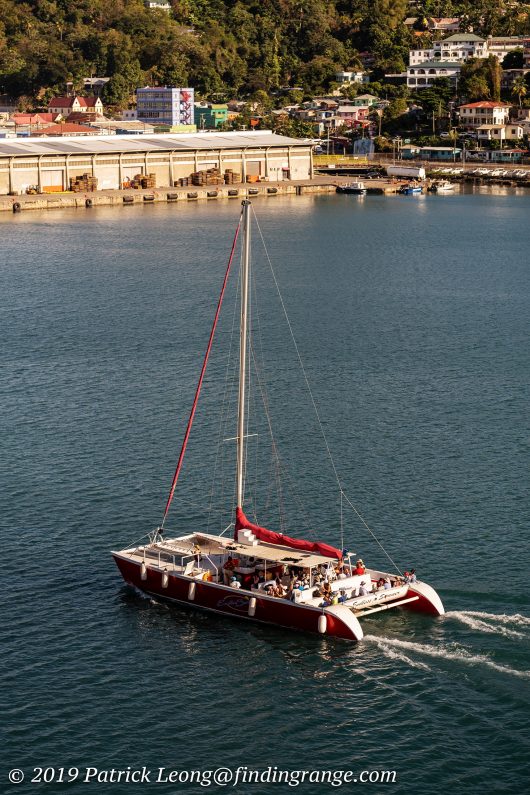
↑ This was taken at 58mm. The settings were f3.5, 1/1000s, and 160 ISO.
Part of the reason the XF 55-200mm isn’t obnoxiously huge is because at f3.5-4.8 for its maximum apertures, the lens isn’t exactly the fastest one around. I’ll also admit that I do love fast lenses not necessarily for only bokeh shots but also because I’m old school in that I prefer to use lower ISO when I shoot. But in the case of the XF 55-200mm, it works. When you add up the build, the image quality, autofocus, and the focal length range, the lens is very versatile, especially when you consider it’s compact enough where you’ll actually want to take it out and use it. You’ll have no issues carrying it with you on vacation (if you find yourself in need of this focal length range, of course), for instance. With the image stabilization added to the mix, all of this to me makes up for the smaller maximum aperture opening. I reviewed the XF 90-140mm a long time ago, and I thought it was a fantastic lens but truthfully, if I had to pick, I’d go for the XF 55-200mm. It fits my needs because I don’t necessarily need a fast long telephoto zoom. I just need the reach but I’d rather sacrifice some speed for something I wouldn’t mind trekking around all day with, for example.
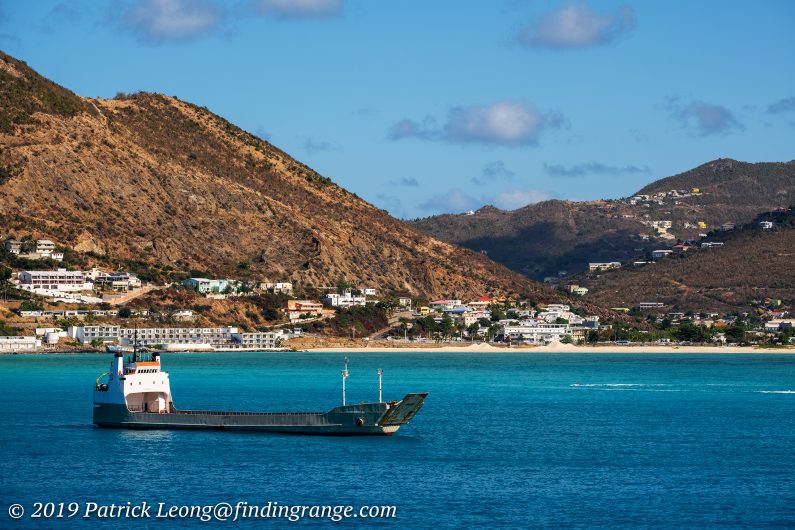
↑ This was taken in Sint Maarten, which is miss quite a bit. I used the 82mm focal length. The settings were f8, 1/550s, and 160 ISO.
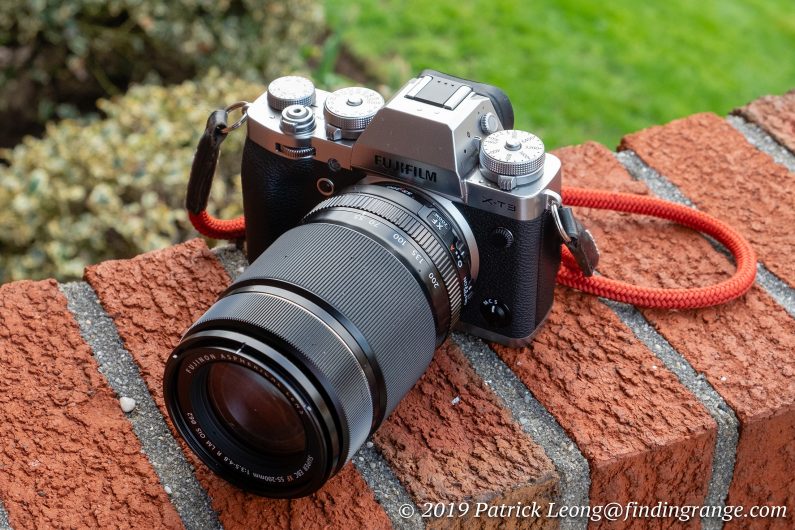
↑ The X-T3 and XF 55-200mm f3.5-4.8 R LM OIS lens are a great combo.
So, if you currently own a Fuji camera, and are looking for a longer telephoto, you should definitely consider the XF 55-200mm f3.5-4.8 R LM OIS lens. At $699, the price isn’t outrageous considering what you’re getting overall. It’s a superb lens, and as you can see, while I don’t usually shoot longer telephotos, I ended up taking quite a lot of pics for this review, which should tell you how much I enjoyed using it.
Thanks for taking the time to read my review! If you’re considering purchasing the XF 55-200mm, and my review helped you decide, please help support this site by purchasing from any of the links in this review. It will not cost you anything extra. Thank you for your support!

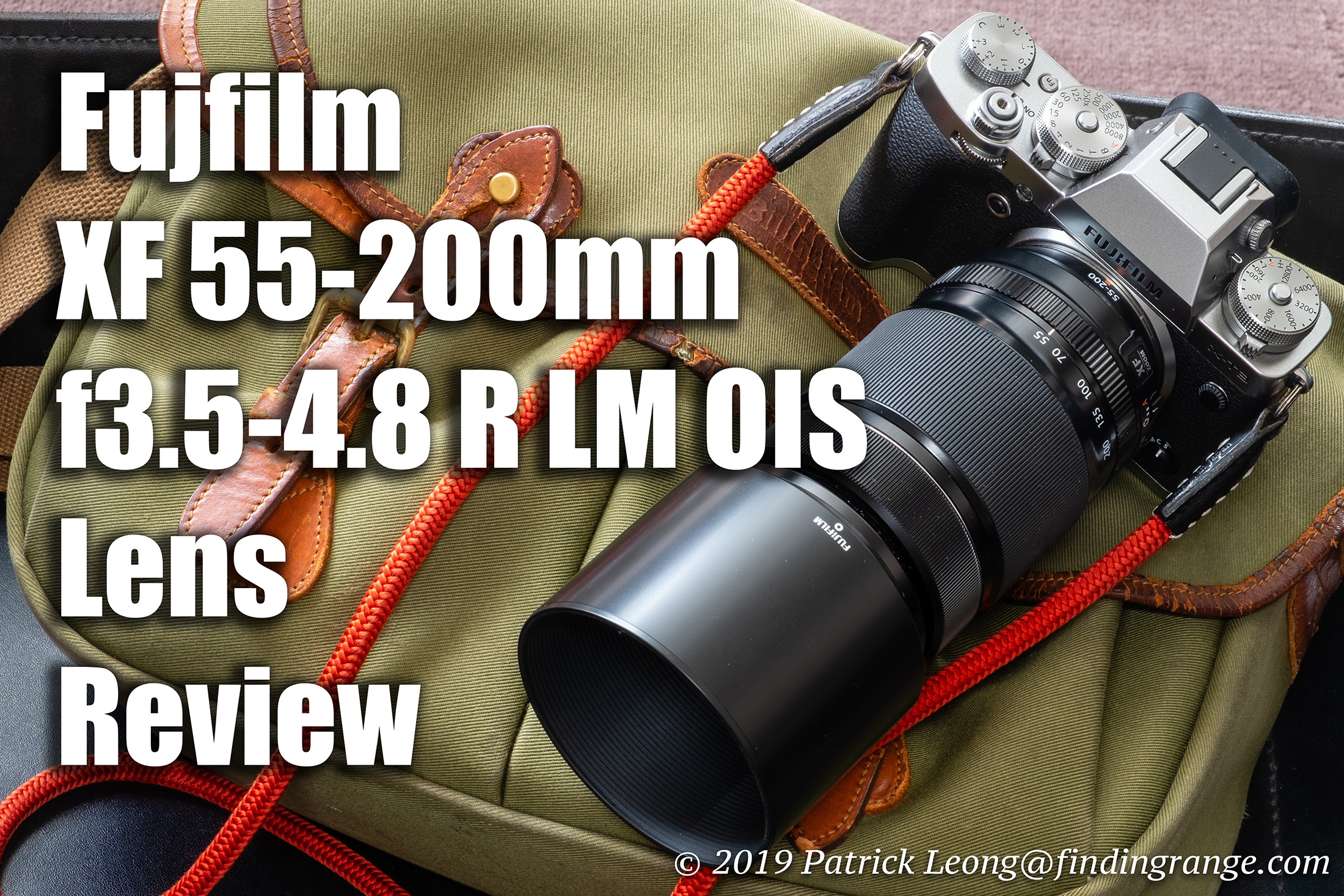
Hi Patrick,
As usual, a very nice review. I got the lens several months ago. Immediately I was surprised by the quality of the results. Another great lens from Fuji.
Cheers,
Steve
Hi Steve,
Thanks! Yes, I am thinking about purchasing one as well. It definitely came in handy, and it’s quite easy to live with. Appreciate you stopping by as usual!
Best,
Patrick
Thanks for the review, and as always, great shots.
I just got this lens; everything you said checks out (including size: with the X-E3 the whole deal easily fits in my purse).
Couple of additional comments. Not only is the lens sharp, it seems to really capture micro-details. I compared shots of an arbor, taken with the Nikon D610 and 28-300, with this. Both about as sharp, but the Fuji revealed so much more detail.
Other thing: I spent about five weeks in Vancouver with the XE-3 and Leica Summicron 50, learning manual focus (standard, with magnification but no focus peaking). Outrageously fun & happy (hmm do I even need the M240 body?)
So I used the same technique on the Fuji lens. Even at 300mm equivalent, manual focus was easy & precise. That’s the image stabilization for ya. Can’t do that with a Leica and a long lens.
Except if some lucky guy owns the SL2 . . .
Hahaha image stabilization is overrated anyway :).
By the way, good to hear from you Kathy! I hope you’ve been well. Hey, so you bought an X-E3??? I thought you didn’t like the Fuji but it’s great to hear you’re giving it another shot :).
As for some of these Fuji lenses, they can be really sharp. You should try some of their primes.
I’m happy to hear manually focusing is working out for you. The X-E3 and the 50 Cron are a great combo. Overall, the size of the combo is hard to beat, and of course, you have that Cron’s image quality.
Like you said, you might not need that M 240 anymore haha. Maybe you can trade it in for an SL2 ;).
I’ve been well, but planning retirement in December: selling one house, buying one in Pacific Northwest.
Which bring up ultimate question: what cameras and lenses do I keep? I want them all! But maybe not so practical.
Yeah, I like the Fuji a lot. I did a bunch of comparisons — M240 vs X-E3 with the summicrom 50, elmarit 90: I can’t see any difference in the pix (because of the crop factor, the special Leica sensor doesn’t come into play).
I do miss the real rangefinder. Maybe what I really want is the X-Pro 2 (used prices are great)
:). 🙂
Good to hear you’re doing well, Kathy! Retirement, huh? Well, maybe it is more of a reason to keep them all haha :). You’ll have more time to do what you love. Practicality is overrated anyway haha.
If you really want the rangefinder type experience, the X-Pro series is great. It has that hybrid viewfinder too, so when you need the convenience of an EVF, it’s there too. Have you seen the new X100V coming out? I know it’s only one lens BUT they do have those tele conversion lenses you know. I’m tempted to switch over from my X-T3 ;).
Retirement definitely has a lot to do with it. We’ll be moving to Washington State, so more mountain, forest, seaside. Not much street photography unless it’s a bunch of raccoons hanging out at the local storm drains. Which is why I got the 55-200 lens, and I think it’ll do really well for a more casual nature photography.
I did look at the x100v, but mostly a used x100f. I was thinking, if ever I had the urge to buy a Leica Q, I could be very happy with the x100f.
Right now I’m playing around with bokeh and my summicrom 50. Any advice on an equivalent Fujifilm lens for the X-E3?
I’ve never been to Washington state before but I heard the scenery can be pretty breathtaking. Plus, if you do find yourself missing street photography, I guess there’s always Seattle :).
The X100f is a great camera, and I imagine you will be able to find one on the used market for a decent price, once the X100V is finally released. The cool thing is you can get those tele conversion lenses for it too, so you wouldn’t have to crop, if you wanted to shoot with a different focal length. I tried them when I reviewed the 100f. They’re sharp.
If you’re looking for something like your Summicron, get the XF 50mm f2. It’s a fantastic lens. It’s weather sealed, it has ultra fast autofocus, and it’s sharp as a tack. Size wise, it’s very similar to the Summicron too, so it’s a great match with the X-E3. In general, check out all of Fuji’s f2 lenses. They’re all excellent, and match well with the X-E3.
Thanks for the reply! I just re-read your review of the Xf 35mm f2 and by golly right in the middle was a discussion on bokeh with some great shots illustrating exactly that!
Your reviews are really helpful; thanks a bunch.
Kathy
Anytime, Kathy! I’m glad to help in any way that I can. Plus, I quite enjoy our conversations :). I apologize; I thought you meant like the 50mm focal length not the 50 eq. The 35mm f2 is one of my favorites. Let me know if you have any other questions.
Best,
Patrick
Hey, Patrick,
You know it’s strange: I went to Tokyo and Vancouver for three months with the Leica D-Lux 6 as my only camera; had tremendous fun and photos I still love.
I haven’t touched it since I got the Fuji X-E3.
It’s the same with the M240: “Now, Kathy, you have to take your M240 out for a walk.” “Awww, mom, I wanna play with my X-E3.”
The very odd part is I feel a sentimental attachment to the D-Lux. Meanwhile I’m scheming behind its back “with a 35mm and cropping the X-E3 gives me most of the range as the D-Lux’
I dunno — you’re a pro and I’d figure you use the kit that gets the work done. You have those sentimental attachments?
I did see your reviews of the tele and wide adapters. They’re amazing — I’d never have expected that kind of quality from an adapter.
You remember I mentioned the M.D. across the street used to be a model? I just found out she was a Playmate of the month. Married to a rock star, the whole thing. Still very beautiful: hard to compete at the block parties. But then we’re going for different audiences 🙂
Cheers!
Kathy
Hi Kathy,
Oh no! I hope you’re not leaving the Leica world haha!
I am super sentimental about my gear haha! My dealer has been trying to get me to trade in my M lenses (all in pristine condition 🙂 ), since I haven’t used them at all but they’re like my children! Each one has a story, and each one has a special place in my heart, which is probably why my ex-girlfriend hated my camera gear ;). I have a sentimental attachment to all my gear BUT I made a deal with myself that things like camera bodies I would trade in, if I needed to simply because they get replaced so fast these days anyway. For me, it’s sometimes in my best interest on a practical sense to upgrade my camera body for new tech or changing a system (M to SL), for example, whereas with lenses, well…they rarely change. Plus, I know the exact focal lengths/features I want when I’m lens shopping meaning I’m not buying say a 400mm to see if I like it or not; so there’s no reason to change my lenses.
My advice is to stick with the system you use most. If, for example, you want a new lens for the Fuji, and you’re not really using your D-Lux anymore, it might be in your best interest to trade it in for more glass. I had a D-Lux, and did the same exact thing actually. The M 240 might be a different story because to me, that’s much more expensive (more difficult to buy back, if I regretted the trade), and it’s an M but in many ways as you have discovered, the X-E3 can serve as a replacement for the D-Lux. It’s compact, has autofocus, and manual controls as well.
I forgot, what lenses are you using now with the Fuji? For the D-Lux, you can maybe even get one of those f2 primes :). They are fantastic.
As for your neighbor, if she ever wants to shoot, send her here haha! I shot with one Playboy model before, and I have to admit, I was a little nervous, since it was also my first art nude shoot.
Best,
Patrick
I can see why she’s your ex-gf: when I try to sell Leica stuff, my spouse tells me I can’t do that, it’s obviously too important to me. You know you’ve found a good mate when you hear that!
That said, I think your advice is the best way to go. If I sell the D-Lux, I likely would get almost enough for a (used) Fuji 18mm or 35 f2. Which has kept me up night reading all your Fuji reviews :). Then I can pick up the Leica D-Lux 15 with 47mp sometime in the future (which will be never, I suspect. The Q2 and the SL2 have lenses that were specifically designed for that kind of resolution. I doubt Panasonic in China will be making that kind of lens in my lifetime!)
But then, I could use a few new items for my Spring wardrobe. Must keep perspective.
Honestly, the real question for me is whether I should get a lens that works for both the M and the Fuji? I’m using the Summicron 50 and the Elmarit 90 on both; the performance is great and I wonder how I’m going to pay for a Leica 28 or 35mm.
As for selling the M, I don’t think I can do it. I was shooting a 4y/o girl pushing her mommy on a swing & she noticed me, asked her daddy “Is that my grandma?’ Dad asked if I was shooting film; his mom used to shoot with a camera ‘just like that’. Apparently even four-year olds know Leica when they see it. And I totally get you keeping your Summiron.
You shoot Fuji; do you ever put the Summicron on them?
My neighbor — I think she’s put that lifestyle behind her. I don’t know anything about models at that level, but I know about mathematicians at that level. One thing I can say, if you’re that good, people want a piece of you. And if you’re twenty one and get that kind of pressure — you have very little idea how to cope.
Mathematicians don’t typically hang with rock stars and the heroin crowd, thank god, but I’m sure you’ve heard about models who get sucked into that. It’s a lot to put behind you…..
HI Kathy!
Haha, you definitely have a good mate! I guess the next person I start dating seriously, I will have to introduce to my Leica gear first ;).
The 35mm f2 for the Fuji is a nice lens. You’ll like it. It reminds me a lot of the Summicron in terms of size, and in addition to being great optically, it’s a speed demon when it comes to focusing.
The thing with Leica lenses though, especially M lenses, is they can hold their value. Plus, it’s great to be able to use it on both systems, and it’s a Leica lens :). So, I can understand why you might want a lens that will work on both.
With that said, I feel it’s still nice to have one or two lenses specifically designed for one system. For me, the autofocus comes into play here. I kept all my M lenses when I switched to the SL system but truthfully, I have not used any except the 75 Lux on my SL2. It’s not like I even needed the 75 Lux either; I used it only because I wanted to just experiment a bit for fun. I can understand some people liking a lens for a particular look but at the same time, I love autofocus lol.
Of course, I’m not telling you to buy just a Fuji lens; all I’m saying is having something that is sharp, handy, and focuses quickly is sometimes very beneficial. In that way, I think it would also give you less reason to keep the D-Lux, since you’ll have something for those times when you simply just want a decent pic without having to invest effort in nailing the focus, especially in action sequences. There’s a lot to think about but if you do choose to go for a Fuji lens, wait for one of their deals, which happens quite often; you’ll be able to get that 35mm f2 for a very decent price.
Personally, I wouldn’t sell the M either. If anything, upgrade to the new Monochrom, and then you can use the Fuji for color haha :).
As for trying M lenses on my Fuji bodies, I’ve done it before but I didn’t really get the results I wanted. Plus, I missed the autofocus haha. I really did love the M but for me, the focusing really was an issue near the end. I was hesitant to switch to the SL system given that I was with the M basically my entire photographic life but once I did make the switch, I never looked back. Of course, I still respect the M, and I love the cameras; it’s just for me, a system like the SL fits better. Also, I’ve tried nearly all my M lenses with my Fuji bodies. The 75 Lux is incredibly difficult to focus lol.
Your neighbor – I bet it’s a lot to put behind but from what I hear from you, it sounds like things are going well for her, which is great. It’s good to hear a happy ending :).
It is now March 2025 and i have to say i found your review of this lens very helpful, the second hand market now supplies this lens in as new condition for half the price, so thanks to your review i am going to buy it for my Fuji XT1 kit, which currently has a 35mm F1.4 on it, i feel it would make a great companion.
Many thanks, Mark